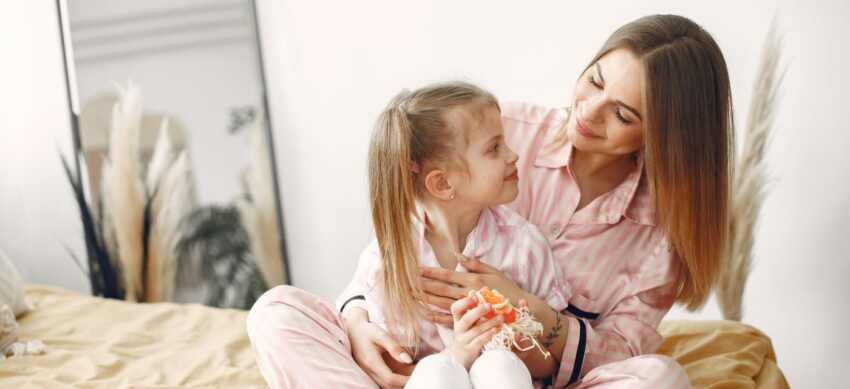Montessori Color tablet boxes are available in three sizes. Each one contains a limitless opportunity for exploration.
•Visual discrimination of color
•Introduction to primary colors
•Sensory refinement
•Order, control & concentration.
MATERIAL:
- Wooden tablets, all the same size and shape, with end bars long
- enough for holding the tablets without touching the colored part of the tablet.
BOX 1
- The wooden box contains pairs of the primary colors; 2 red, 2
- yellow, and 2 blue tablets.
BOX 2
- Contains 22 tablets, representing the full color range, with pairs
- of each of the following colors: red, blue, yellow, orange,
- purple, green, pink, grey, brown, black, and white.
BOX 3
- A box with 9 partitions, each partition holding 7 tablets in
- shades of one color. Seven shades of each of the following:
- crimson red, scarlet red (both shading to pink), blue, yellow,
- purple, green, orange, brown, and grey. There is only a slight
- difference between any two shades in succession in order to
- educate the eyes to see very slight variations of hue.
- The colors used must not be crude or too bright. It is important
- to give the children the most beautiful examples of color. If
- possible, wind the tablets with embroidery silks. Silk takes the
- dye to produce the most beautiful colors. Children appreciate the
- beauty of these colors and the aesthetic sense is awakened.
- Children will also enjoy the smooth texture of the silk.
PURPOSE:
- To give the full color range
- To make the child aware of color and lead him to observe the
- environment with intelligence
- To help the child to appreciate beauty
- To prepare the child for art work
AGE:
- 21/2 years onwards
PRESENTATION:
- Children’s tables should be of neutral coloring for least
- distraction. The teacher takes Box 1 to the child’s table. She
- sits beside the child and takes the tablets out of the box,
- holding them by their wooden ends. she lays them in mixed order,
- but parallel to each other, in front of the child on the table.
- The tablets are positioned so that the wooden ends are at the top
- and bottom of the tablets (instead of to the right and left).
PREPARATION:
- The teacher gives the child a lesson in holding the tablets
- without touching the colored part. She picks a tablet up carefully
- by the wooden end and says, “Look, I can hold this tablet like
- this, and I do not touch the beautiful color. Look, I can hold this
- one too. Show me if you can hold this one without touching the
- color.”
BOX 1:
- The child practices a little with the teacher, and then the teacher
- shows him or her how to pair the colors. She picks up any tablet, places
- it in front of the child, and asks him or her to find another that is the same.
- (The names of the colors are not used at this point, as the child
- may not know the names of the colors.) If the child selects the
- correct tablet, the teacher looks at the two tablets saying, “Yes,
- these are the same. We will put them together.” She places them
- toward the top of the table. She puts another tablet in front of
- the child and asks him or her to find the matching one. When the child does so,
- the two are put side by side. “Yes, these are the same so we will
- put them together.” The second pair is placed under the first. The
- third pair is placed under the second pair.
- If the child hands the wrong color at any point, the teacher
- would not accept it. She would lay the two side by side, consider
- them and say, “No, these are not the same. Find one just the same
- as this one.” (She puts the one she first asked for in front of
- the child.)
- When the exercise is completed, the pairs are mixed and the
- exercise repeated. When the child understands the exercise, he or she can
- work alone.
BOX 2:
- When the child can do Box 1 easily, half of Box 2 may be given.
- (Some children can manage the whole box.) The exercise is the same,
- so the normal child should not need another lesson. When he or she can
- pair these six colors easily, the teacher can give the child all 11
- pairs to work with.
BOX 3:
- The teacher takes the box to the child’s table and sits beside him or her,
- taking out seven shades of one color and laying them in mixed order
- on the table in front of the child.
- The teacher asks the child to find the darkest shade. The teacher
- puts this to the left and asks the child to find the darkest of those
- remaining. The teacher puts this next to the first, and so on, so
- that seven shades are arranged from dark to light in a ribbon of
- color. Some help may have to be given as this exercise is very
- difficult.
- The teacher takes out another group of seven shades of color and helps
- the child to arrange them from dark to light under the first color. The
- teacher continues to give help until the child understands the exercise
- and can work alone.
- Note: The teacher does not correct the child if he makes mistakes
- when working alone. No one can teach another to see color. By working
- with the material, the child perfects him or herself. This is especially true when
- working with Color Box 3. Never mix all the colors in box 3. Only mix
- shades of one color.
VOCABULARY:
For Boxes 1 and 2 – The names of the colors
- For Box 3: Light – Dark
- Light – Lighter – Lightest
- Dark – Darker – Darkest


